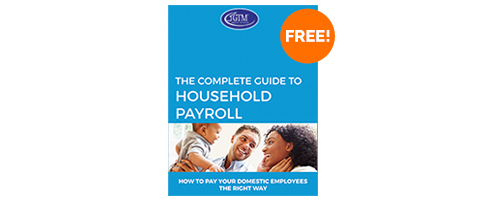
The CARES Act temporarily adds qualified student loan payments as acceptable tax-free contributions to education-related employee benefits.
Update: Originally set to expire on December 31, 2020, the stimulus package extends qualified student loan payments as acceptable tax-free contributions through 2025.
Several provisions in recent federal legislation have aimed to reduce the financial hardship being endured by many Americans during the COVID-19 pandemic. Workers — including household employees — are eligible for paid sick and family leave for specific reasons related to the health crisis and can take advantage of expanded unemployment insurance including additional benefits provided by the federal government.
If your employee has student loans, there is another way to help ease that burden.
Among other measures aimed at easing student loan burdens during the coronavirus pandemic, the Coronavirus Aid, Relief and Economic Security Act (CARES Act) includes a provision that temporarily allows employers to make tax-free payments of up to $5,250 toward their employees’ student loans. This includes families that employ someone to work in their homes like nannies, housekeepers, and senior caregivers.
Under this provision, your payments toward an employee’s qualified educational loans between March 27, 2020, and December 31, 2020, may be excluded from your employee’s taxable income, resulting in tax advantages for both you and your worker.
Employer contributions made outside of that time frame or in excess of the monetary limit are generally considered taxable wages subject to all employment taxes.
Section 127 of the Internal Revenue Code already allows you to pay up to $5,250 per year toward an employee’s qualified educational expenses — such as for tuition and textbooks — on a tax-free basis. The new CARES Act provision temporarily expands that law to include student-loan repayment assistance as qualified educational expenses.
This means that you may, for a limited time, provide an employee with up to the maximum amount in either education-related expenses, student loan payments, or a combination of both.
Employer payments must be made under a written educational assistance program that meets IRS requirements.
You may want to consider establishing — or amending any existing — written educational assistance programs to take advantage of the favorable tax treatment for contributions toward your employee’s student loans.
GTM can help
Want to learn more about educational assistance and other benefits you can provide your employee? Call (800) 929-9213 for a complimentary, no-obligation consultation with a household employment expert on benefits available to household employees and how they could save you money too.
Download The Complete Guide to Household Payroll
Get our complimentary guide and learn everything you need to know about paying your employees legally and filing your taxes the right way.





